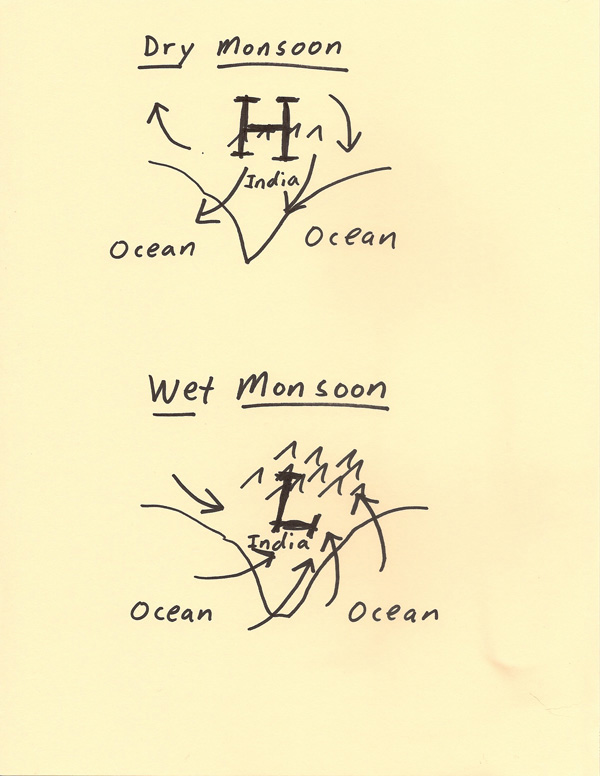
In general terms, a monsoon can refer to an intense rainfall. The actual meaning of a monsoon is a seasonal reversal in wind. This reversal results in the switching from a wet weather pattern to a dry weather pattern or vice versa. The most famous example of a monsoon on planet Earth is the South Asia Monsoon that occurs over the Indian sub-continental land area and adjacent areas. During the dry phase of the monsoon (winter monsoon), high pressure is in control over the Indian subcontinent and adjacent areas. The resulting airflow limits the ability of moisture to penetrate the land area from the ocean. This produces generally drier weather that can last for months. When the reversal of the weather pattern occurs (summer monsoon), low pressure is in control over the land area. This draws in abundant moisture from the warm ocean regions. The lifting of this moisture from low pressure and topographic influences produces significant rain. The diagrams below show an example of the dry monsoon pattern and the wet monsoon pattern. 
|